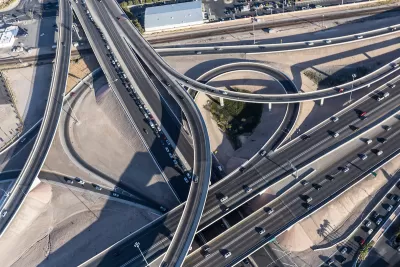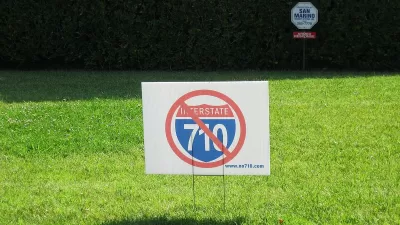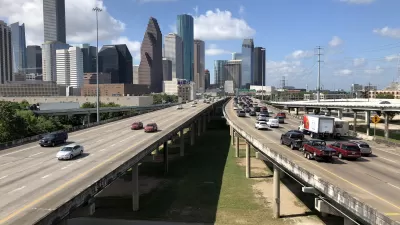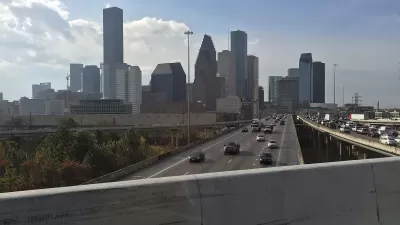A state plan to widen an interstate that cuts through downtown Las Vegas would displace hundreds of homes and businesses.

Las Vegas residents are questioning a proposal by the Nevada Department of Transportation to widen Interstate 515, also known as US-95, in downtown Las Vegas, writes April Corbin Girnus in Nevada Current.
NDOT says a massive increase in traffic volumes since the freeway was built in 1968, along with aging infrastructure and outdated design, are causing congestion and “creating potentially dangerous driving conditions.”
“But at least three dozen downtown households are expected to be displaced as part of the project, which would take several years and billions of dollars to complete. Upwards of 350 households potentially could be displaced, depending on which design the agency decides to pursue.” Local residents say the widening would primarily benefit suburban commuters at the expense of air quality in the city’s core.
NDOT has offered up eight possible alternatives for the project, including a ‘no-build’ option that would leave the roadway unchanged but call for safety improvements. The article notes that “None of the plans include walking and bike trails adjacent to the freeway, which is something NDOT proposed in its original designs but axed after hearing concerns about such areas attracting homeless people.”
However, “As part of its project mitigation plan, NDOT has proposed committing $20 million for ‘Complete Streets’ projects, $15 million to replace on a 1-to-1 ratio any household units it razes as part of right-of-way acquisition, $10 million for ‘resources for the unhoused community,’ and $10 million for an indoor recreation area to replace the existing ones it would tear down.”
FULL STORY: ‘Who does this help?’ US-95 widening project draws ire from downtown residents

Study: Maui’s Plan to Convert Vacation Rentals to Long-Term Housing Could Cause Nearly $1 Billion Economic Loss
The plan would reduce visitor accommodation by 25,% resulting in 1,900 jobs lost.

North Texas Transit Leaders Tout Benefits of TOD for Growing Region
At a summit focused on transit-oriented development, policymakers discussed how North Texas’ expanded light rail system can serve as a tool for economic growth.

Using Old Oil and Gas Wells for Green Energy Storage
Penn State researchers have found that repurposing abandoned oil and gas wells for geothermal-assisted compressed-air energy storage can boost efficiency, reduce environmental risks, and support clean energy and job transitions.

Private Donations Propel Early Restoration of Palisades Playground
Los Angeles has secured over $1.3 million in private funding to restore the Pacific Palisades playground months ahead of schedule, creating a modern, accessible space that supports community healing after recent wildfires.

From Blight to Benefit: Early Results From California’s Equitable Cleanup Program
The Equitable Community Revitalization Grant (ECRG) program is reshaping brownfield redevelopment by prioritizing projects in low-income and environmental justice communities, emphasizing equity, transparency, and community benefits.

Planting Relief: Tackling Las Vegas Heat One Tree at a Time
Nevada Plants, a Las Vegas-based nonprofit, is combating the city’s extreme urban heat by giving away trees to residents in underserved neighborhoods, promoting shade, sustainability, and community health.
Urban Design for Planners 1: Software Tools
This six-course series explores essential urban design concepts using open source software and equips planners with the tools they need to participate fully in the urban design process.
Planning for Universal Design
Learn the tools for implementing Universal Design in planning regulations.
Ascent Environmental
Borough of Carlisle
Institute for Housing and Urban Development Studies (IHS)
City of Grandview
Harvard GSD Executive Education
Toledo-Lucas County Plan Commissions
Salt Lake City
NYU Wagner Graduate School of Public Service





























